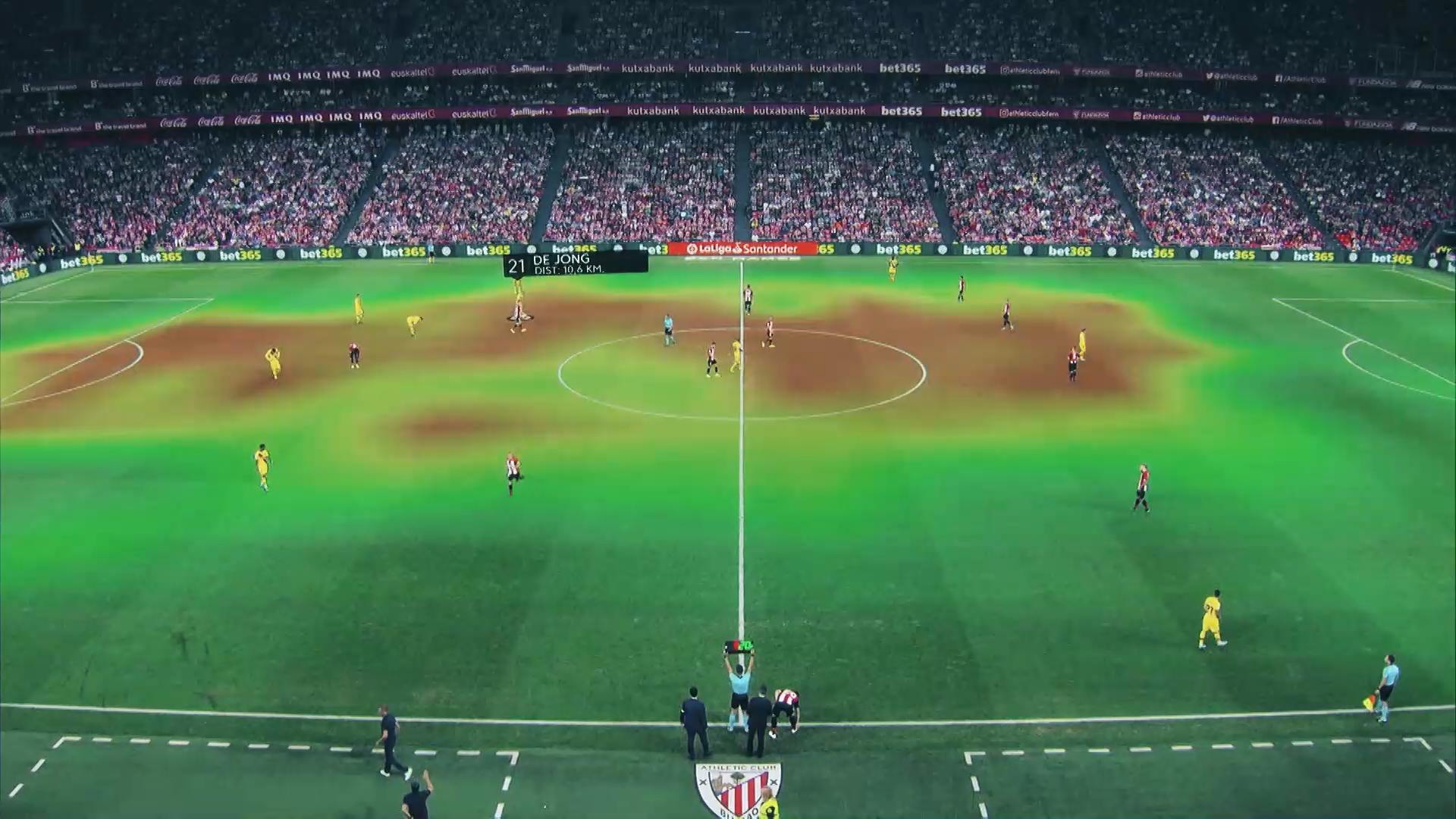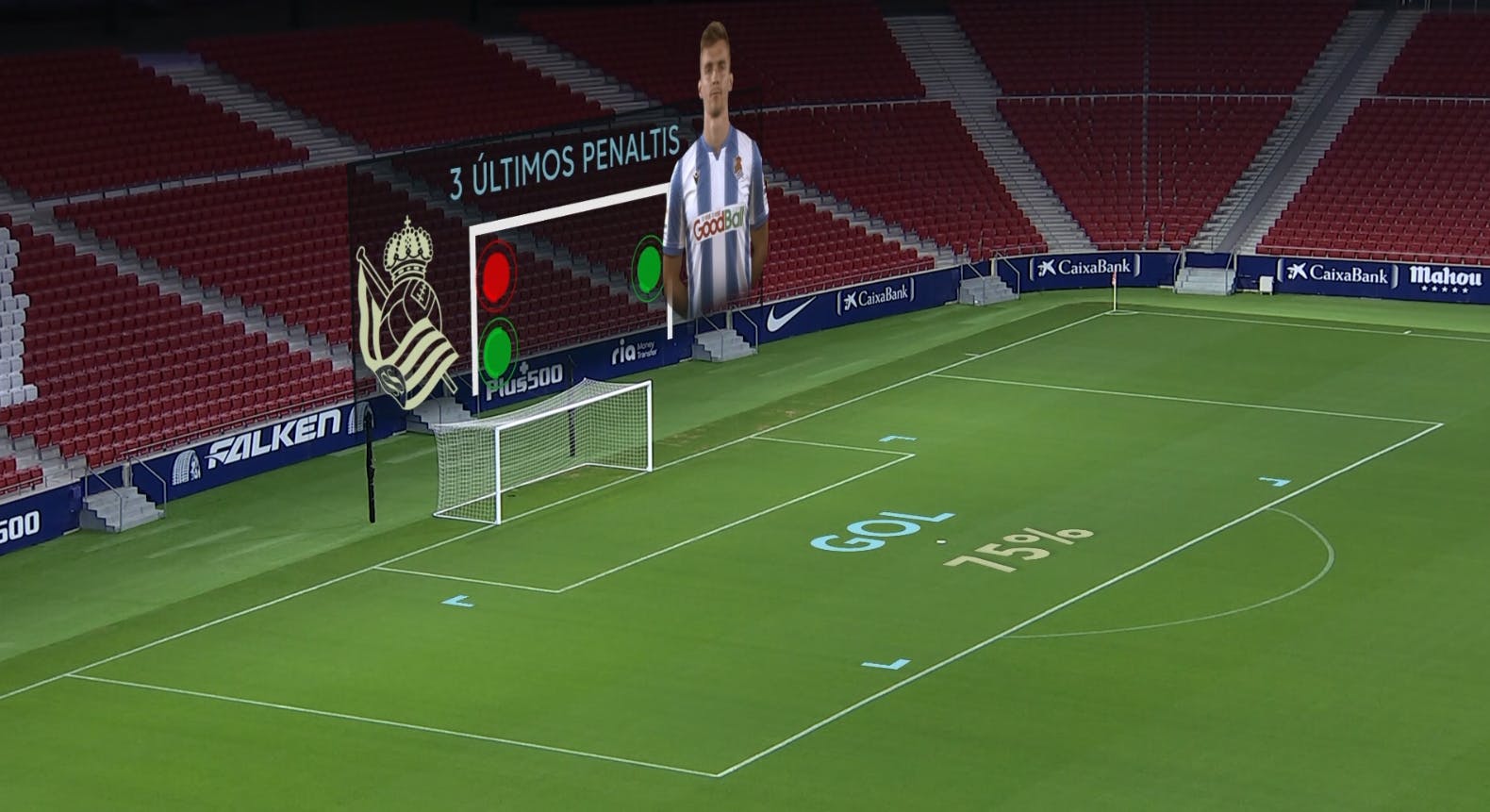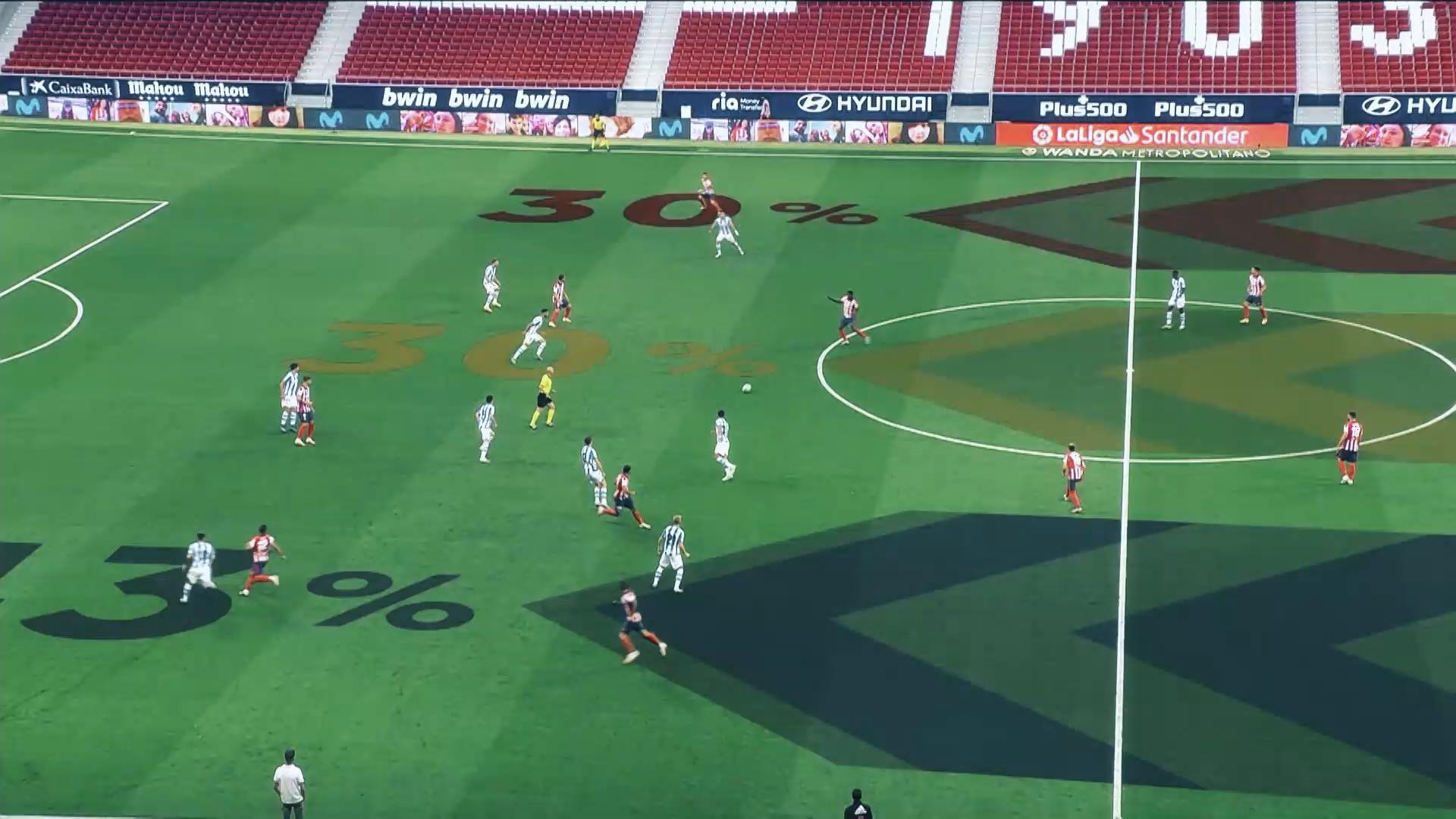For the members of the media, club staff and matchday officials in attendance, the cavernous Nou Camp, without the presence of its usual 90,000-plus spectators, will have never felt so empty when Barcelona hosts Real Madrid in the first ‘El Clásico’ of the LaLiga season on October 25.
However, whilst the ongoing restrictions on fans attending games will be striking for the few hundred able to watch the world’s most famous footballing rivalry in person, the importance of LaLiga’s work towards optimising the viewing spectacle for those tuning in from afar in recent years will be amplified.
Identity
LaLiga’s Television Broadcasting Regulations came into force in the 2016-17 season with the goal of improving the audiovisual perception of LaLiga when viewers watch matches on screens.
The regulations, which are applicable for clubs, producers, broadcasters and anyone involved in delivering match coverage, have enabled LaLiga to establish a pattern for production and direction and have helped to create a ‘LaLiga style’, with its own unique and consistent identity.
The impact has been spectacular. In 2018 alone, before the regulations were updated, no other football competition anywhere in the world had grown as much as LaLiga had in the digital environment.
It is in these unusual times of empty stands though that the fruits of LaLiga’s long-term efforts to become a benchmark in audiovisual innovation by investing in state-of-the-art technology and focusing on the viewing experience have become clear to a wider audience than ever.

Grass is greener
Every possible detail that could enhance the perception of LaLiga is considered in the 101-page Television Broadcasting Regulations.
The document outlines various stadium and television infrastructure specifications, as well as numerous other requirements in relation to content, camera and microphone positions, graphics, match procedures, advertising elements and floodlighting. There are even specific guidelines for the appearance and quality of the pitch, illustrating the standards that are now expected.
For example, clubs are told that the grass should be mowed in straight lines across the width of the pitch, perpendicular to the touchlines, and the lines must be cut in opposite directions two days before the match, with a total of nine strips in each half. The first four strips must be 5.5 metres wide and the other five strips must have uniform width.
Clubs must ensure that the ball rolls perfectly, with the height of the grass cut between 20 and 30 millimetres, and the pitch must maintain the same shade of green throughout.
The pitch requirements raise different challenges for clubs, depending on their geographical setting. For example, in the north of Spain, the likes of Athletic Club have introduced artificial lighting and a unique pitch drainage system to maintain perfect conditions at the San Mamés Stadium in Bilbao.
In central Spain – in and around Madrid, which is the highest capital city in Europe – nutrients are added to counter the harsh winters at stadia such as Getafe CF’s Coliseum Alfonso Pérez. Meanwhile in southern Spain, fertigation and mowing are required at the likes of Sevilla FC’s Ramón Sánchez-Pizjuán stadium, given the high summer temperatures.
4K-HDR
In the most recent regulations, LaLiga clarified the requirements for 4K-HDR productions, demonstrating the desire to push the boundaries in technological innovation. As part of this, floodlighting requirements cover specific details such as vertical and horizontal illumination, colour temperature, glare, and flicker.
4K-HDR production is used regularly for the most high-profile fixtures. Earlier this year, for example, LaLiga worked with content partner Mediapro to ensure El Clásico was simulcast in 4K HDR-HD through 33 production cameras inside the stadium.
In terms of camera positions, LaLiga splits games into four production ‘types’: A+, A, B, and C. The Type A+ productions, reserved for the most high-profile contests like El Clásico, recommend 31 different cameras to provide coverage from all angles, but even the Type C productions incorporate as many as 17 cameras, offering a multitude of perspectives.
At 21 metres above the pitch, LaLiga’s aerial cameras offer spectacular images with a 14x zoom, covering an area of almost 7,000m² and travelling at speeds of up to 10 metres per second.
For major matches, additional high-definition cameras can allow the action to be captured via LaLiga’s Replay360° technology, with media partners able to recreate important moments of matches and rotate views for the best possible angle.
Moreover, LaLiga’s Be The Player technology gives the viewer a player’s eye view, taking the fan as close to the action as possible.

Data
Seeing the footballing stars in crystal-clear definition against a lush green backdrop is part of the standard of viewing experience established by LaLiga and is now expected by fans worldwide.
However, for an increasingly data-savvy audience, there is also a growing appetite for match data.
For that reason, LaLiga-developed proprietary data-driven storytelling tools such as Mediacoach have been introduced into media coverage in order to enhance the viewing experience.
Mediacoach represents a suite of advanced tools that were initially used to provide the 42 clubs in the top-tier LaLiga Santander and second-tier LaLiga SmartBank with real-time performance and match data.
However, Mediacoach data is now also used to enhance the viewing experience, with the network of tracking cameras recording and monitoring player and ball movements to enhance fans’ engagement levels through striking visualisations.
Additionally, by using the same tracking cameras, Mediacoach can determine the exact position of the ball on the pitch and automatically activate ambient microphones, improving the audio experience of the match coverage.
3D graphics
LaLiga is committed to exploring new opportunities to provide the most engaging viewing experience via innovative media technology.
Research has found that, in sports coverage, data visualisations can provide viewers with more accessible and meaningful analysis than straightforward statistics. Moreover, data-driven insights that were previously reserved for the second screen are increasingly expected as part of the primary viewing experience.
With this in mind, LaLiga began the 2020-21 season with a new array of 3D graphics that use augmented reality, artificial intelligence, and real-time data to bring the viewer new insights during a game.
Having created 12 new data-driven graphic visualisations, LaLiga is now able to illustrate key moments such as corners, free-kicks, or penalties to offer tactical insights about where the ball may be directed.
“We want to be informative and take advantage of the data we can create during every match,” explained Roger Brosel, LaLiga’s head of content and programming. “The technology is not being used for the sake of it, but to tell the story of the match better and improve fan engagement.”
Using Mediacoach, which utilises a total of 16 cameras, LaLiga is capturing precise data about where passes are played, as well as distance travelled by individual players and other key moments.
“These graphics help viewers to understand the game better and give the broadcasts a spectacular new dimension,” Brosel added. “Fans are showing a greater appetite for data and we’re able to provide this new information in a way that is not intrusive but complementary to what they are watching.”

Growth
The broadcast innovations and enhancements have helped to drive significant growth for LaLiga.
Earlier this year, El Clásico was broadcast live in 182 countries, reaching a potential audience of more than 650 million people. However, the global reach of the biggest football match on the planet tells only part of the story.
LaLiga coverage reached nearly 2.8 billion viewers over the course of the 2019-20 campaign, representing an 11.5-per-cent increase on the previous season. There were noticeable spikes in interest in markets like Africa (33 per cent) and North America (20.4 per cent).
The global audience rocketed by 48 per cent immediately following the resumption of the 2019-20 season in June, with 105 broadcasters providing coverage in more than 183 countries of the first round of fixtures after the Covid-19-enforced break.
In Asian countries such as India, where LaLiga is shown on Facebook, an increase of more than 72 per cent was recorded for the restart. In Europe, there was a sharp 56-per-cent rise, with countries such as Belgium and Denmark registering increases of 130 per cent and 46 per cent, respectively.
LaLiga also experienced a 12-per-cent increase in its audience in Spain for the first matchday back, in comparison with the contests that took place before the league was suspended.
The second full season of the LaLigaSportsTV over-the-top service also reached more than one million users during the 2019-20 season – its second season of operation.
Despite it having been a year of disruption for the international sporting calendar, LaLiga’s digital footprint has also expanded. In April, downloads of LaLiga’s apps and games – including the league’s official app, LaLiga.com, LaLiga Fantasy Marca, Fantasy, HeadFootball LaLiga, and a number of educational games – reached 110 million.
Over the course of the 2019-20 season, LaLiga increased its digital followers by 25 million to 115 million across platforms such as Facebook, Instagram, Twitter, YouTube, TikTok, Weibo, WeChat, Douyin, Toutiao, VK, OK, and Line.
With LaLiga committed to exploring new technological enhancements and broadcast innovations through the ongoing 2020-21 season and beyond, coverage of Spanish football’s biggest stars and clubs will reach more viewers and engage more fans for years to come.